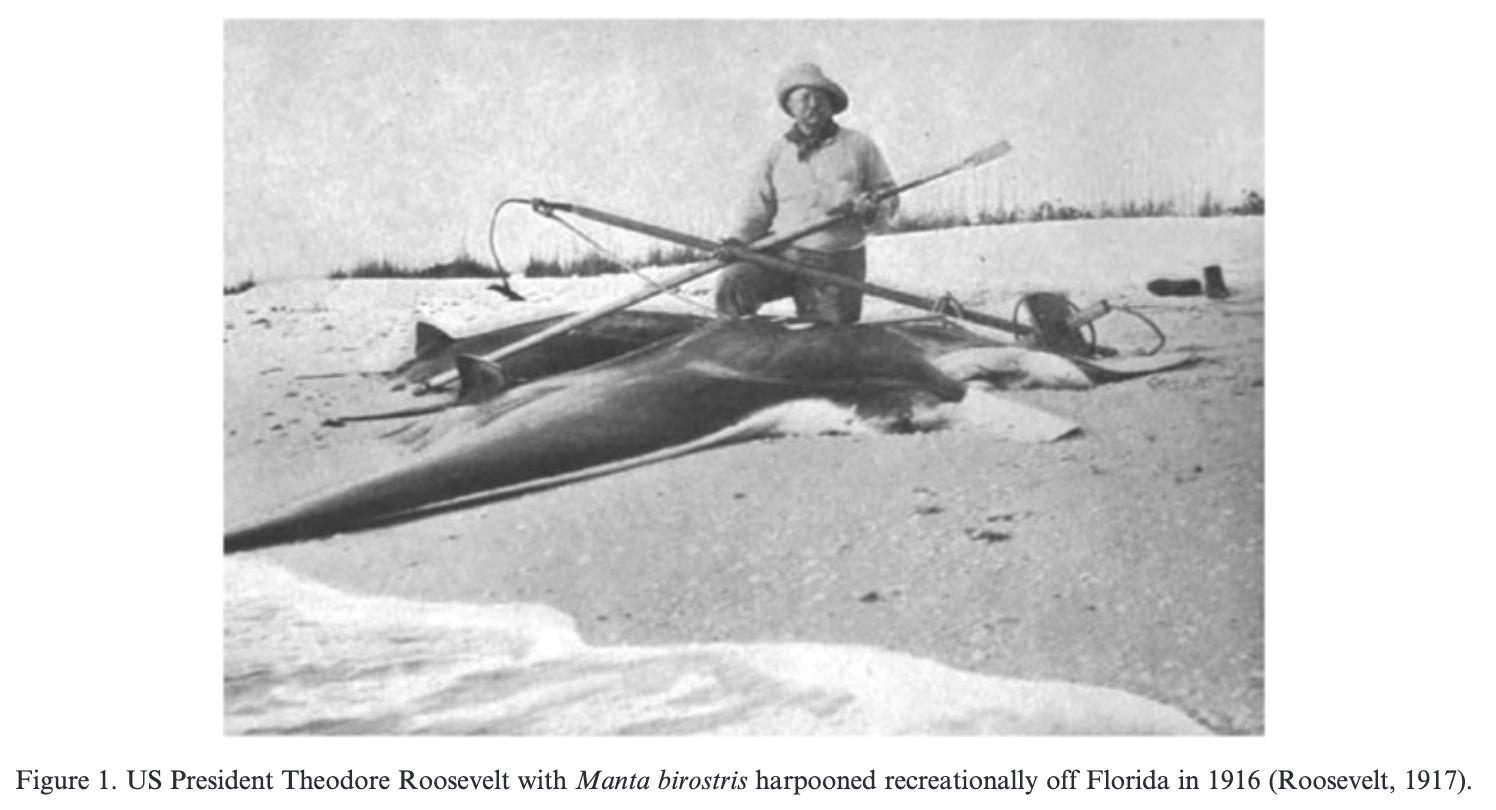Vulnerabilities and fisheries impacts: The uncertain future of manta and devil rays
November 2015
Donald A. Croll, Heidi Dewar, Nicholas K. Dulvy, Daniel Fernando, Malcolm P. Francis, Felipe Galván-Magaña, Martin Hall, Shawn Heinrichs, Andrea Marshall, Douglas Mccauley, Kelly M. Newton, Giuseppe Notarbartolo-Di-Sciara, Mary O'Malley, John O'Sullivan, Marloes Poortvliet, Marlon Roman ,Guy Stevens, Bernie R. Tershy & William T. White


Summary: Manta and devil rays (mobulids) are large, pelagic elasmobranchs that are poorly studied and listed as threatened or near threatened on the IUCN Red List. Their vulnerable status is due to life history characteristics that make them susceptible to overexploitation. Fisheries pose a significant and increasing threat, both through targeted catch and bycatch, especially in tuna purse seine fisheries. Thirteen countries have targeted mobulid fisheries, while 30 countries have mobulid bycatch fisheries. Despite some national restrictions, there is a lack of comprehensive monitoring and control of mobulid fisheries. Recent CITES listing benefits manta rays, but devil rays remain unprotected. Catch mitigation measures have minimal economic costs compared to other marine conservation issues.
Abstract
“1. Manta and devil rays of the subfamily Mobulinae (mobulids) are rarely studied, large, pelagic elasmobranchs, with all eight of well-evaluated species listed on the IUCN Red List as threatened or near threatened.
2. Mobulids have life history characteristics (matrotrophic reproduction, extremely low fecundity, and delayed age of first reproduction) that make them exceptionally susceptible to overexploitation.
3. Targeted and bycatch mortality from fisheries is a globally important and increasing threat, and targeted fisheries are incentivized by the high value of the global trade in mobulid gill plates.
4. Fisheries bycatch of mobulids is substantial in tuna purse seine fisheries.
5. Thirteen fisheries in 12 countries specifically targeting mobulids, and 30 fisheries in 23 countries with mobulid bycatch were identified.
6. Aside from a few recently enacted national restrictions on capture, there is no comprehensive monitoring, assessment or control of mobulid fisheries or bycatch. Recent listing through the Convention on the International Trade in Endangered Species (CITES) may benefit mobulids of the genus Manta (manta rays), but none of the mobulids in the genus Mobula (devil rays) are protected.
7. The relative economic costs of catch mitigation are minimal, particularly compared with a broad range of other, more complicated, marine conservation issues.”
Author Affiliations
Coastal Conservation Action Lab, University of California
Southwest Fisheries Science Center, NOAA Fisheries
Biological Sciences, Simon Fraser University
Department of Biology and Environmental Science, Linnaeus University
The Manta Trust
Fisheries, National Institute of Water and Atmospheric Research
Centro Interdisciplinario de Ciencias Marinas
Inter-American Tropical Tuna Commission
Blue Sphere Media LLC
Marine Megafauna Foundation
Department of Ecology, Evolution, and Marine Biology, University of California, Santa Barbara
Tethys Research Institute
WildAid
Monterey Bay Aquarium
Department of Marine Benthic Ecology and Evolution, Centre for Ecological and Evolutionary Studies, University of Groningen
Environment Department, University of York
Marine and Atmospheric Research, Commonwealth Scientific and Industrial Research Organization
Funded by
Monterey Bay Aquarium
